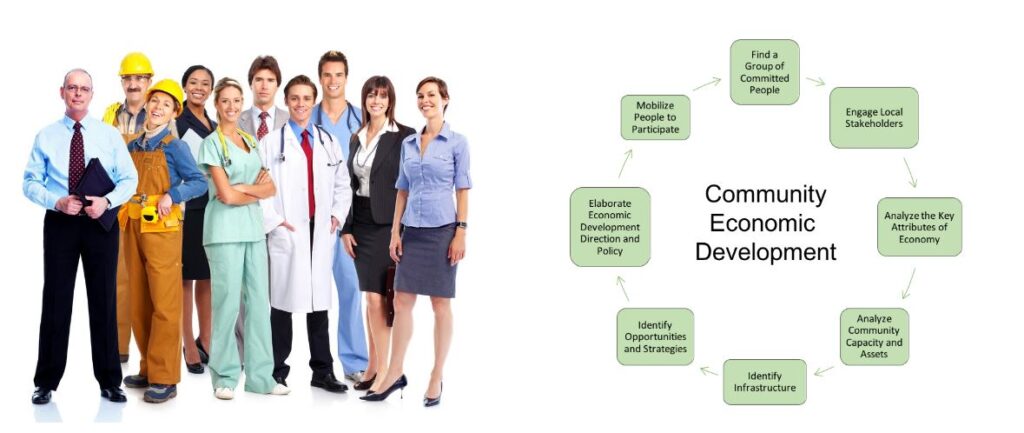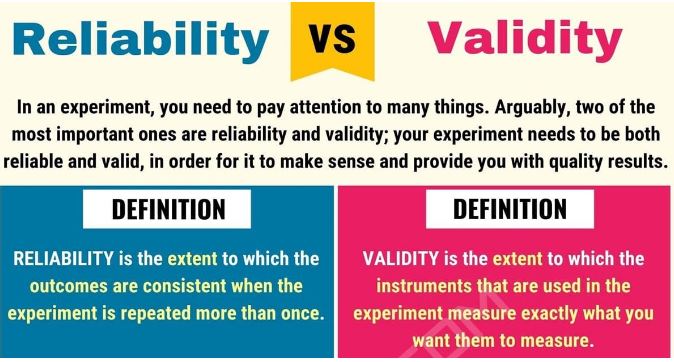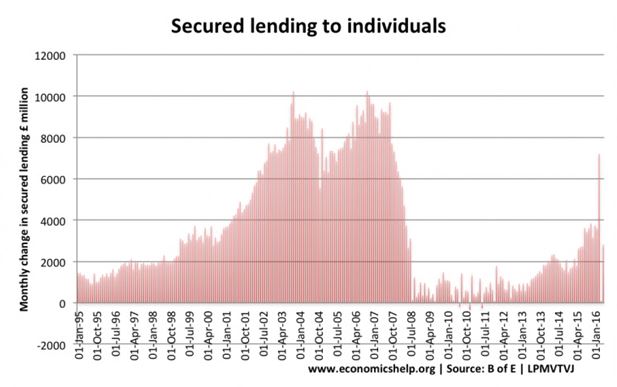Management Practices and Business Strategy
Despite the fact that research findings are mixed, it is beyond a reasonable doubt that management practices are related to productivity, growth, decline, and failure in organizations. This report sets forth a multidisciplinary review and summary of evidence of such a relationship. The report presents a thorough and meticulous scrutiny of three peer-reviewed journal articles in terms of how management practices relate to growth, productivity, failure, and decline of companies. The articles include Bloom et al. (2012) study, Sadun et al. (2017) study and Teece (2007) study on management practices and explicating dynamic capabilities respectively. Taken as a whole the three research articles share similar sentiments. They both establish a solid positive relationship between management practices, growth, productivity, failure, and decline. Nonetheless, in extensive literature review, research findings seem equivocal.
Some researchers have established a positive relationship between management, growth, productivity, failure, and decline, some have found a negative correlation while others no correlation at all (Bender, Bloom, Card, Van Reenen & Wolter 2018). According to Bloom et al. (2019), it can be argued that the deficiency of a consensus might have been prompted by either issues related to the level of analysis or measurement. With this said, there is an urgent need for further research especially in terms of a multi-level approach to evaluate the impact that management practices have on productivity.
Management Practices, Productivity Growth, and Decline
There have been endless debates as to whether organizations are likely to succeed if they embrace good management practice. Scholars have been conducting studies for over a decade now to end these debates. The scholars have endeavored to reexamine the long-held assumptions to confirm whether they stand the test of time (Bloom et al. 2019). Since the time of Frederick Taylor’s work on principles of scientific management, organizations have traditionally followed a formalized set of best practices including three practices that are considered essential to good management such as targets, incentives, and monitoring. Most organizations around the world are poorly managed. The well-managed organizations establish achievable targets on productivity and growth as well as gauge the promotions and compensations they give on attaining the set targets (Bloom, Sadun & Van Reenen 2012). Unlike poor managed organizations, these companies continuously measure results.
Better management practices are strongly correlated with superior performance, increased return on capital, as well as increased productivity. It is clear that core management practices cannot be taken for granted. With this said, there are significant differences in terms of how organizations accomplish basic tasks such as grooming talent and setting targets. Those organizations with robust managerial processes perform significantly superior on metrics of high level like profitability, productivity, longevity, and growth (Ghoshal 2005). The differences in performance and quality of such processes persist with time signifying that core management practices cannot be replicated easily.
Operational excellence matter a lot but it should be viewed as a critical complement to strategy. In this regard, if an organization cannot put its operational fundamentals right then it does not matter how good the strategy is (Wong 2020). Again, if organizations maintain, for instance, sound management practices, these firms can leverage them to create dynamic capabilities like evidence-based decision making, data analytics, as well as cross-functional communication that is crucial to thrive in a volatile and uncertain industry. As much as it requires a sizable investment in processes as well as people throughout the bad and the good times, attaining managerial competence calls for ultimate effort and the investments bring along a key barrier to imitation (Yeow, Soh & Hansen 2018).
Productivity is a notable metric of economic progress and revolves around issues related to economic growth, incomes, as well as competitiveness. Productivity is molded by management practices, global market structures, competencies, and skills of people, as well as the adoption of new technologies (Yeow et al. 2018). A growing body of evidence posits that organizations that engage in target setting, performance-centered human resource management, as well as extensive use of data analysis are more productive and exhibit increased productivity growth levels as opposed to those with fewer formalized management practices.
This evidence has a particular focus for the manufacturing sector where most recent studies have been based; nonetheless, it is also becoming strong for the service sector as well (Bloom et al. 2019). Information on management has been lacking until recently. Small sample analyses and case studies can avail expedient anecdotes; however, they fail to generalize to the wider economy because of unrepresentative samples and a narrower focus.
In the contemporary turbulent competitive business landscape, organizational managers are striving to achieve competitive advantages to beat competition through the efficient as well as effective use of resources. Good management practices at all organizational levels has been proven and is increasingly being accepted as the sure way of improving productivity and growth (Bloom et al. 2012). With this said, improved levels of productivity allow organizations to fulfill all their obligations to suppliers, government, stakeholders, consumers, as well as employees while still staying competitive.
Research shows that organizations that apply the accepted management practices across the globe perform better that those that fail to do so. This assertion implies that the improved management practice is among the most effective approaches organizations can employ to outpace their rivals (Ghoshal 2005). Greater competition pushes for improved management practice, labor market flexibility, on the other hand, leads to better habits of people management and the well-managed organizations are those likely to have highly educated employees.
Dynamic Capabilities and Management Practices
Organizations that maintain sound management practices leverage them to create dynamic capabilities. Recent studies have put a particular focus on the significance of dynamic capabilities to organizational success and longevity (Teece, Peteraf & Leih 2016). With reference to organizational theory, the dynamic capabilities entail an organization’s ability to build, reconfigure, as well as integrate the external and internal competencies to address the fast-changing business environment (Fainshmidt, Wenger, Pezeshkan & Mallon 2019). The term dynamic capability was first coined by David Teece in the year 1997. Dynamic capabilities reconcile incongruous philosophies that an organization can be stable enough to deliver to its clients original and distinctive value while remaining adaptive enough to adjust when conditions suggest so.
According to Wong (2020), dynamic capabilities are tied to original management practices and business models making it hard to imitate them; they allow for extension, modification, as well as creation within a firm. The development of the iPod, for instance, is a good example of dynamic capabilities (Felin & Powell 2016). After realizing that the mp3 players were aesthetically unattractive and large, Apple grabbed the opportunity to design smaller and more appealing iPods. The company then switched its focus to consumer electronics as opposed to just sticking to computers.
The move has allowed Apple to dominate both the music and portable digital music player industries. This approach by Apple depicts the company as a creative and aesthetically focused firm. With this said, developing dynamic capabilities depend on three core organizational activities including sensing, seizing, and transforming (Sadun, Bloom & Van Reenen 2017). Sensing entails the evaluation of consumer needs as well as opportunities that are external to the firm; seizing which entails the reaction of a firm to the needs of the market to maximize the company value including securing access to resources as well as designing innovative business models.
Transforming, on the other hand, involves the renewing of organizational processes as well as maintaining the processes relevance to customers (Shao 2019). This calls for managers to continuously improve, iterate, as well as streamline processes.
The dynamic capability concept has been linked to a resource-based view of the organization as well as to the idea of ‘routines’ in the organizational evolutionary theories. The dynamic capabilities emphasize more on the concept of competitive survival to address the changing business conditions while the resource-based view stresses on sustainable competitive advantage (Felin & Powell 2016; Yeow et al. 2018). It is argued that dynamic capabilities serve as a bridge between evolutionary approaches to organization and economics-based strategy literature (Yeow et al. 2018). The dynamic capabilities theory entails the establishment of stratagems for managers of organizations to adapt to rapid intermittent change whereas sustaining the minimum capability levels to ensure competitive survival (Sadun et al. 2017).
Industries that rely on particular traditional manufacturing processes are not positioned to alter the process on short notice especially when tech arrives. However, when this transpires, organizational managers are required to adapt their routines to make the most out of their resources whereas concurrently planning for the future changes in processes as resources denigrate (Shao 2019). With this said, the type of change being emphasized by the theory of dynamic capabilities are the internal capabilities and not the external forces of business.
Although further research is required to measure dynamic capabilities as well as suitably apply the concept to practical management contexts, many scholars argue that the theory of dynamic capabilities is tautological and vague (Sadun et al. 2017; Teece et al. 2016). This assertion seems to hold true, as much as the theory is very helpful when it comes to addressing the rapid changing business conditions, it still fails to explain how to do so.
According to Teece et al. (2016), the theory’s capabilities are difficult to operationalize and identify as well and at other times, the very capabilities could prompt the core capabilities into turning the core rigidity (Felin & Powell 2016). In this regard, some studies have argued that it still hard to apply the theory in its present state without being in a position to develop, identify, as well as specify the capabilities. Nonetheless, recent studies have introduced a mechanism from the theory of dynamic capability for net enablement called the “Net-Enabled Business Innovation Cycle” to further an understanding as well as help predict how organizations transform the dynamic capabilities linked to net-enablement into consumer value using the theory (Shao 2019; Sadun et al. 2017).
The net-enabled organizations are able to constantly reconfigure their external as well as internal resources to apply digital networks in exploiting opportunities via routines, rules, analysis, and knowledge to create consumer value from the net-enablement capability (Sadun et al. 2017).
Businesses maintain portfolios of the hard to trade and idiosyncratic assets as well as competencies and competitive advantages can flow right from the sustenance of scarce but difficult to imitate resources such as expertise and novel ideas (Felin & Powell 2016; Teece 2007). Nonetheless, in the rapid changing business environment characterized by stiff competition, sustainable competitive advantages demand more than just the possession of hard to imitate assets; it demands the unique and hard to imitate dynamic capabilities (Teece 2007). Such dynamic capabilities can be leveraged to constantly help to extend, protect, create, as well as upgrade the unique organizational assets.
How the Findings Might Help Improve the Performance of the Firm
For the company that I operate in, the findings of this report are good news. These findings posit that the company has access to any performance improvements only by applying and implementing good management practices already used by other firms. Very few firms have management practices that are above average and the need to spread the word to thousands of underperforming organizations is urgent. A bigger part of the opportunity for improvement rests with local managers. To determine how far behind the company is, managers must rigorously assess their own management practices and contrast them with others. These managers can benchmark themselves by industry and country (Bender et al. 2018). Awareness is very low and should be the first initiative to be taken by the company managers.
After establishing where they need to improve, managers must start to embrace a slow but steady growth. Successful companies have reached greater heights by making good beginnings through the identification of processes that require immediate change and then afterwards developing the metrics to monitor advancement over long and short term. In this regard, goals must be visible to all employees and translated into group, individual, as well as company wide targets that are to be monitored meaningfully.
Of course, immediate results cannot be expected but by establishing powerful incentives, focused targets, as well as constantly monitoring performance could be effective in diving future greater shifts. Global organizational have be obliged to embrace a systematic management approach and only through maintaining robust as well as effective management practices have they managed to replicate similar performance standards across various cultures, markets, and regions (Ghoshal 2005). With this said, these organizations are realizing the benefits that come with good management practices including better capital returns, increased growth, as well as higher productivity. These benefits are readily accessible to other firms but very few have made efforts to obtain insights into the quality of their management practices. Nonetheless, those that do so enjoy the access to cost effective as well as sustainable competitive edge.

Lessons
The review of the three articles is fundamental to the credibility and rigor of research in social science. Obviously, the articles feature fundamental differences when it comes to format, length, and content but they both share similar sentiments. The articles are characterized by work built on management surveys across various companies. A critical lesson drawn from these studies is that it is a limitation to focus only on senior managers when providing feedback in research surveys because in sociological literature, there is varying opinions between senior managers and workers within the same company when it comes to evaluating management practice. With this said, workers might provide a valuable counterpart point of view to their managers’.
Another lesson drawn from review of articles is that unlike quantitative studies, qualitative research reports need a thick description of phenomena and context. This result from interpreting and describing observed behavior within a particular circumstance. Reports placed in this context must go beyond mere fact to present detail as well as webs of relationships that join dots to establish event sequence for the topic in question. Actions, meanings, feelings, as well as voices of persons are heard in thick description. Further, a thick description gives a balanced view of interpretation and analysis while showing that the research reflects thoroughness, appropriateness, and rigor. I have learned that this approaches supports transferability and trustworthiness of research to other contexts.
Further, another lesson drawn from the review of the articles is that it is paramount to establish a clear sense of urgency, small goals, and a clear research focus to be able to sort through immense data volumes as well as coalesce different data pieces towards building a remarkable interpretation of data with extrapolations on composite and dynamic literature. Additionally, tuning an empirical psychological science focus that is characterized by abstract reasoning and analysis helps to establish a contextual sensitivity that allows one to develop strong associations between the perspective of the author and the context in which research is founded.
Another lesson drawn from the review of articles is that to successfully scrutinize literature, a person must develop a well-structured workflow and a detailed oriented mindset to achieve a methodical review or else one might get overwhelmed and focus on mere data exploration. Further, a person needs to develop inspective reading and read ravenously to point out specifics as well as gaps in literature. However, for a successful review and summary of literature, a person needs to develop a data-driven mindset that will allow the individual to think outside the box to ensure his/her evaluation expertise serve the purpose.
References
Bender, S., Bloom, N., Card, D., Van Reenen, J., & Wolter, S. 2018. Management practices, workforce selection, and productivity. Journal of Labor Economics, 36(S1), S371-S409.
Bloom, N., Brynjolfsson, E., Foster, L., Jarmin, R., Patnaik, M., Saporta-Eksten, I., & Van Reenen, J. 2019. What drives differences in management practices? American Economic Review, 109(5), 1648-83.
Bloom, N., Sadun, R. & Van Reenen, J., 2012. Does management really work? Harvard business review, 90(11), pp.76-82.
Fainshmidt, S., Wenger, L., Pezeshkan, A., & Mallon, M. R. 2019. When do dynamic capabilities lead to competitive advantage? The importance of strategic fit. Journal of Management Studies, 56(4), 758-787.
Felin, T., & Powell, T. C. 2016. Designing organizations for dynamic capabilities. California Management Review, 58(4), 78-96.
Ghoshal, S. 2005. Bad management theories are destroying good management practices. Academy of Management learning & education, 4(1), 75-91.
Sadun, R., Bloom, N., & Van Reenen, J. 2017. Why do we undervalue competent management? Harvard Business Review, 95(5), 120-127.
Shao, H. X. 2019. Developing Organizational Dynamic Capabilities in Project-Based integrated Solution: A Study of Servitization in Chinese Water treatment Industry.
Teece, D., Peteraf, M., & Leih, S. 2016. Dynamic capabilities and organizational agility: Risk, uncertainty, and strategy in the innovation economy. California Management Review, 58(4), 13-35.
Teece, D.J., 2007. Explicating dynamic capabilities: the nature and microfoundations of (sustainable) enterprise performance. Strategic management journal, 28(13), pp.1319-1350.
Wong, A. 2020. The Key to Keeping Up: Dynamic Capabilities. California Review Management.
Yeow, A., Soh, C., & Hansen, R. 2018. Aligning with new digital strategy: A dynamic capabilities approach. The Journal of Strategic Information Systems, 27(1), 43-58.
Relevant Posts
Business Management Dissertations
If you enjoyed reading this post on management practices and business strategy, I would be very grateful if you could help spread this knowledge by emailing this post to a friend, or sharing it on Twitter or Facebook. Thank you.





